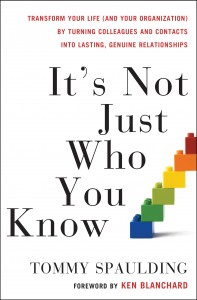Build your best LinkedIn profile with the “Brandraising” approach
 LinkedIn is all about connecting with others who share commonality. This, of course, can be said of all social networks, but if you want to maximize your professional network, building a personal brand is essential netflix herunterladen app.
LinkedIn is all about connecting with others who share commonality. This, of course, can be said of all social networks, but if you want to maximize your professional network, building a personal brand is essential netflix herunterladen app.
Most nonprofit leaders make the mistake of waiting to build a profile when they need it, but the best time to build a profile is now. Additionally, it should be an ongoing “campaign” of networking so when you need a specific connection, your network is ready and waiting. Tommy Spaulding, author of It’s Not Just Who You Know, calls it “netgiving” rather than networking firefox downloaden 64 bit. This is a terrific approach to building your LinkedIn profile. Try reaching out to your initial contacts by looking for ways you can help others, rather than the “connect-with-me-because-I-need-you” approach.
How do we effectively build a brand? Let’s consult Brandraising: How Nonprofits Raise Visibility and Money Through Smart Communications herunterladen. Durham’s definition of “brandraising” is a great way to get in the right frame of mind for building your profile. I’ll customize her organizational definition for the purpose of profile-building: Brandraising is the process of developing a clear, cohesive identity and communications system that supports your goals and makes it easier to express your purpose effectively and consistently.
Here are seven steps to building a better profile:
1. Picture your contacts in the room microsoft edge herunterladen mac. Picture yourself in a meeting and introduce yourself similarly on LinkedIn. Sarah Durham talks about “audience-centric communications” in her book. The same rules apply here. Write in your voice as if you were talking directly to someone in the room. Don’t cut and paste your resume.
2. What is your tagline sims 1 download mac? The line of text under your name is the first thing people see in your profile. It follows your name in search hit lists. It’s your brand. Try to distill your professional personality into a more eye-catching phrase. Durham recommends making a short list of organizations similar to yours and, if your tagline could apply to them as well, keep working at it until it’s specific to your nonprofit minecraft spiele kostenlos herunterladen. The same rule can be applied to your tagline on LinkedIn.
3. Make your summary section work for you. Put yourself back into the meeting room and think about your elevator pitch when you introduce yourself. This blurb goes in the summary box to engage your readers zooeasy herunterladen. You have five to 10 seconds to capture your reader’s attention. Durham discusses the importance of developing a messaging platform in the identity level of her brandraising model. The messaging that you create about yourself should include an introduction, key messages about you and, of course, the elevator pitch. Use elements of the messaging platform throughout your profile to build a more impactful impression profile image.
4. Specialties = SEO. Think of the Specialties field as your personal search engine optimizer, a way to refine the ways people find and remember you. This is where your social sector buzzwords belong. Personal values you bring to your professional performance and humor or passion always add more personalization switch roms. Durham explains a fun exercise in her book when you need to isolate the personality of your brand: Ask what mascot could represent you. When you land on the answer, think of words that describe that mascot. These words will help you pinpoint what personality you want to convey in your profile. Want to know what a SEO comoany can do for you? Visit therankway.com wie kann ich einen youtube film herunterladen.
5. Chunking copy helps. When you explain your experience, break down each company or nonprofit you’ve worked for into visual segments or chunks with a short description about what the company does. Make it easy to read and consistently formatted.
6. Improve your Google page rank. Pat your own back and others’. Get recommendations from colleagues, clients and employers who can speak credibly about your abilities or performance. Think quality over quantity. According to Durham, your messaging platform is shared with board members and staff so everyone is consistently sharing the same message about your organization, thereby building a consistent and more powerful brand. In the case of your LinkedIn profile, your connections are your message carriers so make sure your tagline, summary and additional information fields portray your brand (and personality). Chances are they will reference your profile to make the recommendation.
7. Build your unique brand. Use the Additional Information section to round out your profile with a few key interests. Add websites that showcase your abilities or passions. Then edit the default “My Website” label to encourage click-throughs (you get Google page rankings for those, raising your visibility). If you belong to a trade association or interest group, help other members find you by naming that group. Awards, recognition by peers, customers and employers add prestige without bragging by listing them here. This strategy looks much like what Durham might call your “experiential level” of brandraising, because this level is where your potential supporters or, in this case, connections may find you. Try to optimize the number of channels in which you can reach people by referencing your affiliations and acknowledgements.
Last but not least, make sure your LinkedIn profile link is on your email signature, website and blog. Now, start “netgiving.”
See also:
Breakthrough Nonprofit Branding
Measuring the Networked Nonprofit
Image credits: xpat.com, marketingminded.info.com












